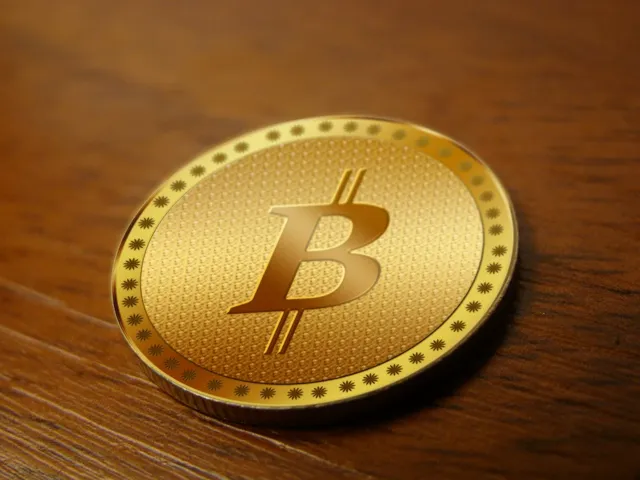INTRODUCTION
There are a lot of global movements towards renewable energy and, therefore, creating serious obstacles to financing and investment in such renewable energy sources whose capital-intensive projects include wind farm, solar plants, and hydroelectric systems. These projects need upfront capital costs and long-term financing. However, centralized traditional financing mechanisms are inefficient and offer limited access for smaller investors, which slow down the clean energy transition, particularly in underserved regions.
Cryptocurrency and blockchain technological innovations have paved ways to overcome those challenges. They allow decentralized, transparent, and most importantly, secure financial transactions for renewable energy funding. Its validity and traceability ensure immutability and trust between public stakeholders. Altogether, such technologies lead new ways in capital-raising, investments management, and energy distribution optimization.
The post discusses all the cases of use of cryptocurrency under renewable energy financing and investment. It shows how solutions based on cryptocurrency are facilitating crowdfunding, enabling peer-to-peer (P2P) energy trading, tokenizing renewable assets, and facilitating green energy incentives. Examining these cases reveals the cryptocurrency potential that will lead to a sustainable energy future.
- CRYPTOCURRENCY FOR RENEWABLE ENERGY CROWDFUNDING
Cryptocurrency is radically changing crowdfunding for renewable energy projects. Its decentralized platform makes raising capital for the green energy project that much easier. Conventional methods-the banks' in-between specialized crowdfunding platforms with many fees-often demand high overheads and limit opportunity for smaller investors. Cryptocurrencies and similar decentralized innovations allow individual persons spread across the world to reach out and contribute directly to your cause.
Blockchain technology may be in a position to improve transparency and accountability in these crowdfunding projects. Everything gets recorded on the blockchain, providing the donors and investors with an infallible ledger as far as allocation and the use of funds are concerned. This is a sample of how renewable energy startups may use utility tokens and cryptocurrencies to raise funds for individual projects. These tokens will be ownership representation, usage rights, or future returns that would align the investors with the project's success.
The latest news includes successful cryptocurrency crowdfunding examples for renewable energy like WePower and SunExchange, which allow direct investments of ordinary people in renewable projects anywhere they are. Thus, financing becomes democratized, ultimately accelerating the actualization of projects through greater public involvement in the transition to renewable energy.
- PEER-TO-PEER ENERGY TRADING WITH CRYPTOCURRENCY
Through cryptocurrency, peer-to-peer (P2P) energy trading is possible, which has brought about a really great change in the field of renewable energy distribution. Economies where energy is traded only within a central place and distributed by utility companies define how energy is produced and consumed nowadays. This centralistic model, however, brings a lot of inefficiencies, and costs as high as the utility's price generally become a disaster for renewable energy producers, especially for households which have installed solar panels.
Instead of employing the traditional utility framework, blockchain enables these energy producers to start transactions in selling excess energy to consumers through cryptocurrencies. Smart contracts are self-executing agreements programmed through blockchain that facilitates such trades automatically by pairing consumer needs to the corresponding availability. A good example of this will be where homeowners with excess energy derived from solar will sell that energy into the public grid through payments in cryptocurrencies.
The model emphasizes local energy marketplaces while lowering transmission losses, as well as encouraging the ad of renewable energy systems. Projects such as Power Ledger and LO3 Energy have already made strides in peer-to-peer energy trading and show how P2P energy trading could incrementally decentralize energy markets. Such platforms integrate cryptocurrency into their processes and provide renewable energy producers with access to a global market, which can guarantee equal compensation and green practice.
- TOKENIZATION OF RENEWABLE ENERGY ASSETS
An important scenario in which cryptocurrency can be used in renewable energy is tokenization of renewable assets. It means creating a digital token on a blockchain to represent production sites, for example solar farms, wind turbines, or hydroelectric plants, as electronic replicas. These tokens can be bought or sold, traded, and are enabling a new way of fractional ownership and investment.
Tokenizing the renewable assets can help developers broaden the investors' reach beyond traditional investors. Investing in renewable energy is often viewed in traditional terms as requiring huge sums of money as investment amounts, thus positions the investment for institutional investors only. Tokenization has opened the space where individuals can put in small amounts of cash in particular projects. For example, an investor can buy some tokens constituting a share of a solar farm, earning returns depending on energy generated and sold.
By tokenization, liquidity in renewable energy markets can be enhanced. Unlike traditional investments, which can take years to produce returns, tokens can be traded on cryptocurrency exchanges, giving investors flexibility and access to secondary markets. Energy Web Token (EWT) is already exploring this model, an effective means to deliver capital for renewable projects with transparency and accountability.
- INCENTIVIZING GREEN ENERGY ADOPTION
Cryptocurrency serves as a new base for promoting the "adoption of green energy" through cash rewards for individuals and companies in their sustainable practices. Traditional built-in incentive programs like government subsidies and tax rebates are unable to reach the required numbers because of their complexity in terms of the administration process.
Cryptocurrency serves as a platform for the further incentivizing of individuals and corporate entities for their sustainable practices. Existing traditional incentives such as government hand-outs and tax exemption schemes are rather complicated and cumbersome regarding processing and do not reach critical numbers. Conversely, the incentives given through the cryptocurrency system offer a more simple and inclusive alternative.
Green energy tokens on blockchain platforms can reward participants for generating or consuming or supporting renewable energy. For example, a person using a solar panel would be allowed to earn cryptocurrency as a micro-payment for contributing excess energy into the electricity grid. Companies introducing renewable energy solutions into their operations can also earn tokens that can be traded or used for a reduction in energy-related services.
SolarCoin as well as CarbonX can be seen as examples of this model of incentivization. With SolarCoin, solar energy producers earn tokens for each claimed megawatt-hour of generated electricity by their installation, while CarbonX measures carbon footprints and allows individual users to gain cryptocurrency by going with lower footprints. These go beyond simply promoting and helping renewable energy adoption: they also create a synergetic financial ecosystem with sustainability benefits and economization.
CONCLUSION
Cryptocurrency opens ways to speed the transition towards clean energy by novel means such as fragmented, transparent, and efficient means of raising capital for renewable energy financing and investment.
Crowdfunding, P2P trading of energy tokens, and asset tokenization for renewable energy projects, among other activities, are just examples of how cryptocurrencies open new doors to opportunities toward an accelerated transition to clean energy. By helping to eliminate the conventional financial barriers to entry and also by creating new avenues for inclusion, these innovations would ensure scalability for renewable energy projects to provide for global needs.
Challenges persist though such as regulatory uncertainty and technological adoption. Still, the integration of cryptocurrency and blockchain into the renewable energy ecosystem will herald a future for the energy industry that is sustainable as well as equitable.

.webp)

X Share Link: https://x.com/Whizzbro4eva/status/1871979833858920605?t=ZpUvyZMTewEtWUE50vE-RQ&s=19
Downvoting a post can decrease pending rewards and make it less visible. Common reasons:
Submit
Downvoting a post can decrease pending rewards and make it less visible. Common reasons:
Submit
Downvoting a post can decrease pending rewards and make it less visible. Common reasons:
Submit
The world of renewable energy is transforming a whole lot of things and I am so sure this is just the beginning. There will be more and more coming
Downvoting a post can decrease pending rewards and make it less visible. Common reasons:
Submit
Thanks for your valuable comment
Downvoting a post can decrease pending rewards and make it less visible. Common reasons:
Submit
Note:- ✅
Regards,
@jueco
Downvoting a post can decrease pending rewards and make it less visible. Common reasons:
Submit